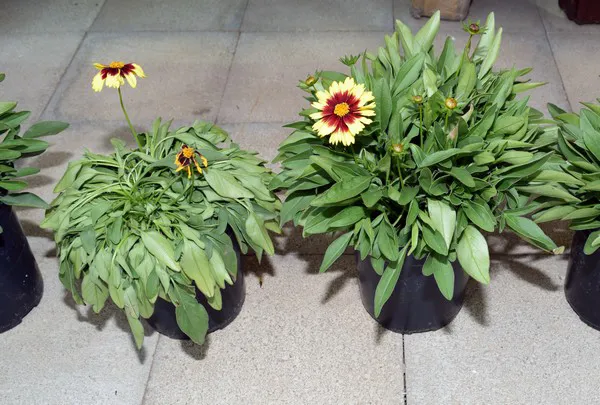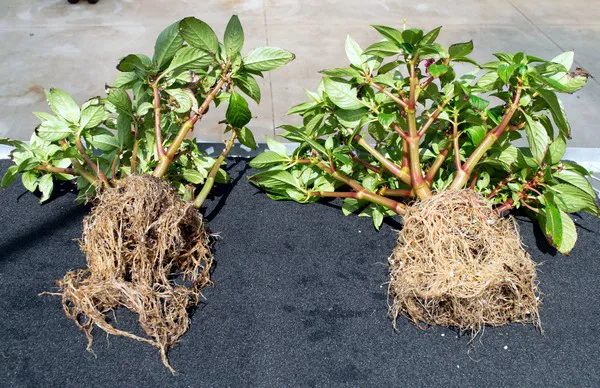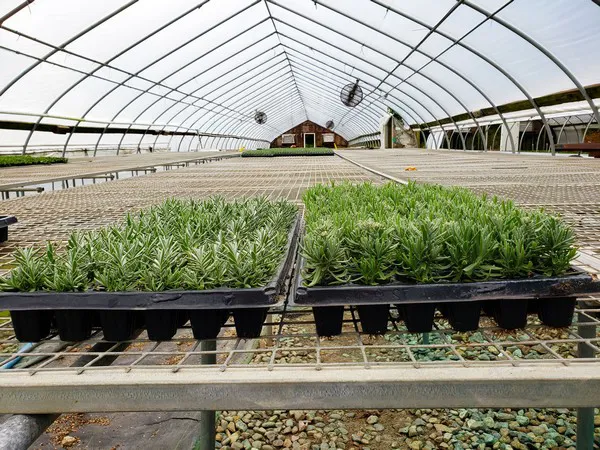Mycorrhizae are beneficial soil organisms used in all kinds of horticulture to help maximize plant performance. The company Mycorrhizal Applications produces and researches commercial mycorrhizae. The company has 25 years of experience helping growers of all kinds adopt this symbiotic technology.
With all kinds of resources, they help growers learn more about mycorrhizae. “We’ve recently updated our spreadsheet in which growers can find whether they're using the right kind of mycorrhizae for their target crops," says Graham Hetland, Product & Communications Manager for Mycorrhizal Applications.
How does it work?
The fungi create symbiosis with plant roots, where the mycorrhizae grow out into the soil or growing media to take up nutrients that would otherwise be inaccessible to the plant. There are two major types of mycorrhizal fungi, ‘endo’ and ‘ecto’.
This video gives a brief explanation of how mycorrhizae work:
Endo – Ecto
Endomycorrhizae are the most commercially important type, as these beneficial fungi benefit about 80% of all plant species. Endomycorrhizal fungi create symbiotic structures to exchange resources between root systems and the fungus. To form the symbiosis, endomycorrhizae get inside the plants’ root cells to establish a nutrient and water exchange system. They grow out into the soil to collect macronutrients, micronutrients, and water to deliver directly to the plant’s cortical cells. Endomycorrhizae do not make ‘mushrooms’, i.e. they only reproduce underground. If the host plant dies, so do the endomycorrhizal hyphae, as they are obligate symbionts.
Ectomycorrhizal fungi perform the same services for plants, but they benefit only about 10% of plants and the way of interfacing and symbiosis is different. They form a net of hyphae between the root cells but not inside the cells. Ectomycorrhizae also form a ‘mantle’, like a sheath, around the plants’ roots, and thus protect from other harmful things in the soil as well. Ectomycorrhizal fungi form symbiosis mostly with trees, woody shrubs, and such. They do reproduce above ground and form the ‘mushrooms’ that most people associate with fungi.
Water
Plants with mycorrhizal ‘relationships’ are more resilient to drought stress and can last longer between watering rounds. “We probably have a dry summer ahead, and it is always an issue to get water fast enough,” says Graham. “Field trials have shown that mycorrhizae can extend that irrigation interval window by about 24 to 48 hours.”

"In field trials, the treated plants resisted 24-48 hours longer than untreated plants" left: untreated; right: treated.
Nutrient management
Mycorrhizae serve as living extensions of the plant root system increasing the nutrient absorption surface area of the plants. In field conditions, plant roots are limited to a small soil volume for absorption of nutrients. This zone (depletion zone) is particularly important for immobile nutrients such as phosphorus.
To obtain more phosphorus, plants have to overcome the limitations of this zone. Mycorrhizal hyphae serve this purpose by reaching out of the depletion zone, and improving the ability of the plant to access additional soil resources. Hyphae can grow up to 20-24 inches in length. With the addition of mycorrhizal, crop plant uptake and utilization of fertilizer inputs becomes far more efficient, which can lead to significant decrease in fertilizer use.

"You can see the difference in root development and nutrient acquisition between the untreated plant on the left and the treated one on the right"
COVID-19
The company produces their products at the headquarters in Grants Pass, Oregon, and sources most other inputs and supplies within the US. Luckily they haven’t had any shortages. “In our state, Oregon, there’s a lot of restrictions for who can work and who can’t. We are an essential service, as we supply agriculture industry (which has remained an essential service nationwide), so we have been lucky enough to be able to keep our doors open.”
Product introductions
The company would introduce new products at trade fairs, but due to the pandemic, these are all postponed or canceled. Last year they introduced MycoApply Injector Endo. This is a very concentrated mycorrhizal powder on a soluble carrier that is good for use with horticulture injector systems. “It can be included in standard irrigation, it’s drenched into the root zone together with the water.” This year the company introduces the organic version of this product. The product has multiple species of mycorrhizal fungi on a humic carrier and is called MycoApply Injector Endo Organic.
CytoFlor is another product that the company recently launched. This is a plant growth regulator for ornamentals. It promotes flowering and increases lateral or basal branching. The product also reduces overall height of specific plants, which makes the plants more compact.

"At Prides Corner Farms in 2019, the left lavender plug tray was untreated, the right was was treated"
Virtual Cultivate and other online education options
Mycorrhizal Applications will be hosting a virtual booth at Cultivate’20. Also, one of the company's technology team experts will be hosting a Cultivate’20 education session on water management, entitled: 'Enhance your crop's water uptake, utilization, and storage with mycorrhizal fungi' as part of the Root Zone Management Series which will be available throughout the week of Cultivate’20 virtual. The virtual version of Cultivate will be held July 13-16.
Ahead of Cultivate’20, a '101' review of how mycorrhizae work, and how horticulture growers can benefit from the technology will be presented, on July 8th at 17:00pm UTC. The title of this webinar is: 'Mighty Mycorrhizae: using friendly fungi to optimize ornamental production'. This webinar will cover all the basics, like how the symbiosis is established, application options, the way the fungi work to support plants, average costs of treatment, and ROI.
 Mycorrhizal Applications
Mycorrhizal ApplicationsPO Box 1029
Grants Pass, OR 97528
Toll Free: 866-476-7800
Phone: 541-476-3985
Fax: 541-476-1581
inquiries@mycorrhizae.com
mycorrhizae.com
